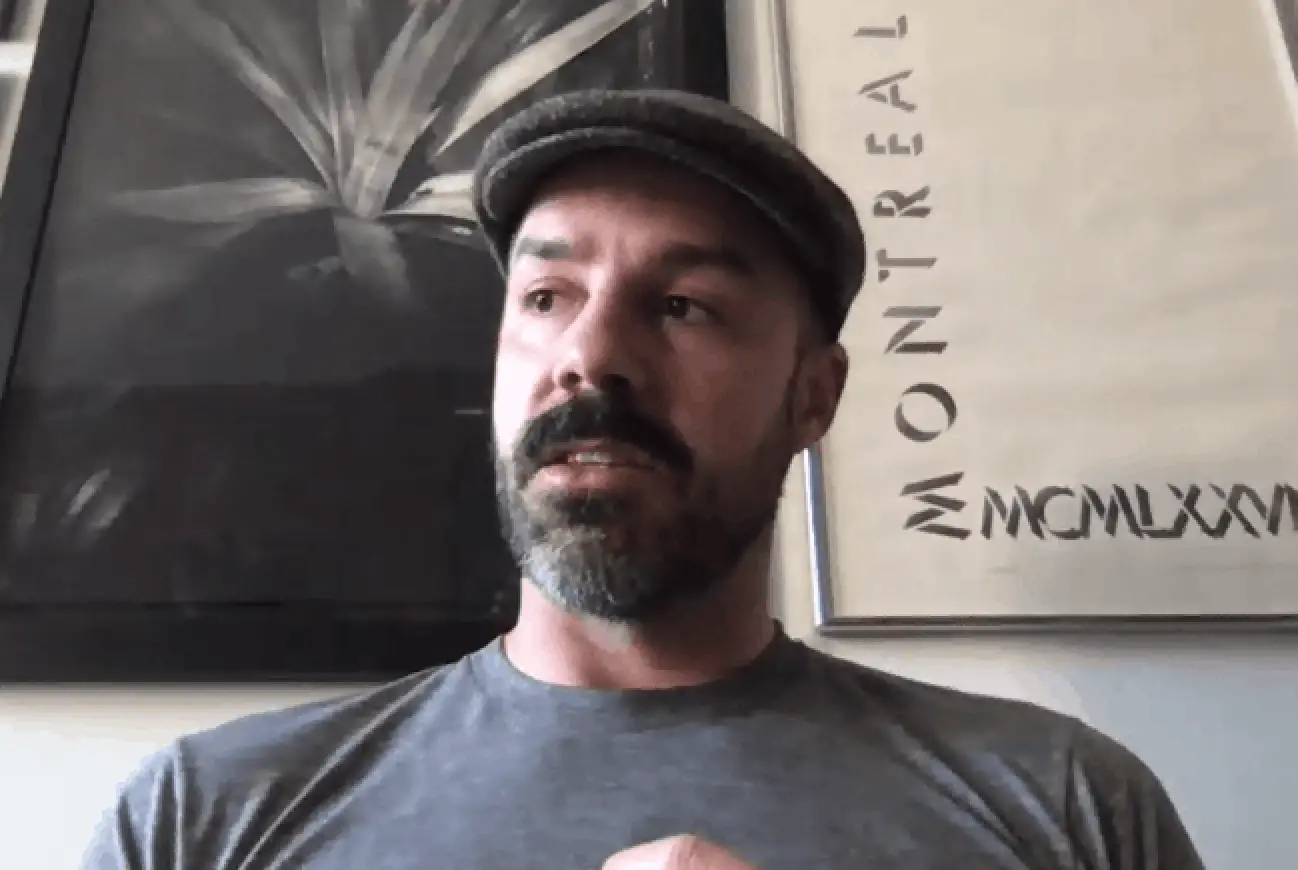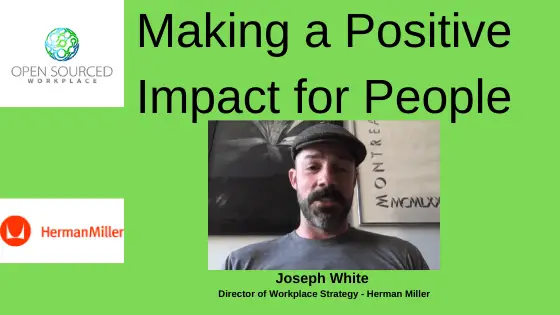Although Joseph White started his studies in architecture, he was unable to get the interior of the buildings out of his mind. With the push of a professor, he found himself transferred to the interior design program. He was drawn to the commercial side of design because he felt as though he could make a positive impact on people in that environment.
Unexpectedly, Joseph started working for Herman Miller, a large furniture manufacturer. His journey from architecture student to Herman Miller Director of Workplace Strategy has provided him with information that might be considered a goldmine.
Workplace Discovery Process
When a workplace strategy company seeks to understand clients at a deep level, that company gets a grasp on the real needs of the client. The language in design strategy can reveal intimate information about how people live their lives. Getting a deep understanding of this information allows you to create a project that works for each specific client.
While the past had White and his team recreating the wheel for every different client, a new program allowed him to see a new language. That program provided a new way to develop an environment and connect it to human behavior. This was how he created a workplace discovery process for his firm at the time (unknowingly developing a very similar program to Herman Miller’s discovery process).
External Consultants and Cultural Challenges
Every company has its differences in work and culture, but having an outside consultant can do amazing things for many different companies. Although it might seem as though it is best to use internal workers that know projects and data inside and out, someone that is less familiar with the project can offer a different perspective.
With the addition of an outside perspective, something that an internal employee missed can be seen easily. When you look at the same thing day after day, seeing what is right in front of you can be challenging. Fresh eyes remove bias and other obvious things that an external consultant offers.
Changing Company Culture with Environment
Many companies seek a change in company culture, but according to White, the environment alone cannot change a culture. It can help or hinder the change, but ultimately, the environment cannot be the sole catalyst for change. Because of this, it is imperative that the organization is understood. Communication must take place to understand the desired change.
What is needed and where are companies that seek this change? Measuring the placement of where an organization is and where they want to be is crucial to achieving the change desired. The experience of work is a Ven Diagram that includes people, work, process, and place that can help to answer the necessary questions.
The people portion asks who is doing the work and why they are doing it. The process section defines the work, how it happens, and when it takes place. The place part of this diagram includes the physical environment in which the work is being completed and how that space is created. When you think about it, every employee experiences every single one of those components, even when they have not been designed well.
Dissatisfaction in the work experience is usually a result of the loss of one or more components and the worker falls through the gap. This happens when there is a lack of support from any or all of those categories.
Joseph White paints the picture of a plant that has been moved from one location to another. The plant will struggle with the change and take time to adjust to that change. People are the same. Without the necessary introduction to change, it is hard for workers (and plants) to accept it. Because an organization is a living organism just as a plant is, care must be taken to create a change in culture.
Facilities Based on Change
Although the book The Office, a Facility Based on Change was written in 1968, it is still relevant today. How is it possible? Joseph explains that it is still applicable because it is based on insight into human behavior. With so many changes happening in the world and workplace today – from AI to automation and other large transformations – humans are not changing as quickly.
Goal: Positive Impact Reaching around the World
Creating a positive environment in the workplace is something that might even make a change to society. White understands that there might be a reach in this goal, but he believes it is worth the try. He sees, as many people do, the negativity around the world and also how much time people spend at work. When workplace negativity occurs, it inevitably spills over into other aspects of life.
What happens when there is workplace positivity? Will it spill over into other areas of life? Joseph believes it can make a real, positive impact.
How to Make a Positive Impact in the Workplace
How do you go about making that positive impact in the workplace? White thinks that remembering that workers and employees are all people and those people are all unique. There is no one size fits all solution. Companies and organizations have to fit the positivity to each individual. They can now support work and workers with diversity, mobility, and flexibility in a humane manner.
How do you Maximize Productivity and Workplace Experience?
Purpose-driven workplaces must understand how you contribute to the bigger purpose. This must be done at every level, from the company, leadership, and individuals. It can create an ultimate goal that everyone can contribute to. Doing so leads to better productivity and high-quality experiences.
Secondly, there must be a sensory design for transition spaces. This includes variation in sensory experiences. Although most office buildings are places of uniformity, people should be able to sense the difference from one environment to the next. This is often achieved by different colors, light levels, glossy or matte surfaces, or temperatures. Doing this kind of transition is natural and prepares people for the change from place to place.
As a knowledgeable source on all things office design and workplace, Joseph White offers a lot of info to take in. Perhaps most importantly, however, is his desire to make a positive impact on more than the office. With aspirations such as these, workplace experience is sure to soar and productivity along with it.
Connect with Joseph HERE (Do you know or have have you worked with Joseph? If so, help Joseph, provide a review for HERE
(Do you know or have have you worked with Joseph? If so, help Joseph, provide a review for HERE )
)
Watch the full Interview – Click image below.
Related Questions
What is The Office, a Facility Based on Change? This book is a publication by Robert Propst that has remained relevant over a number of decades. It proposes questions and challenges faced in the workplace as it relates to change.
What is included in the sensory design? Sensory design is the incorporation of all senses in design. This means things that you can see, feel, hear, touch, and smell. All aspects are necessary for a complete sensory design.


